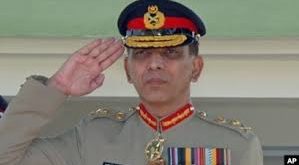Introduction to the Indian Army and its communication systems
Step into the dynamic realm of the Indian Army, where cutting-edge technology intertwines seamlessly with strategic warfare. In an era dominated by digital advancements, communication lies at the heart of military operations. Join us on a journey to unravel the key IT systems that empower the Indian Army in safeguarding our nation’s sovereignty and security.
The use of satellite communication for secure and reliable communication
The Indian Army harnesses the power of satellite communication for secure and reliable operations in diverse terrains. Satellite networks ensure seamless connectivity even in remote locations where traditional communication infrastructure may be lacking. By leveraging satellites, the Army can establish encrypted channels for confidential exchanges, safeguarding sensitive information from interception.
This technology enables real-time data transmission between units, headquarters, and command centers, enhancing coordination and decision-making during critical missions. With satellite communication, troops on the ground can stay connected with superiors to receive updated instructions swiftly and efficiently.
Moreover, satellite links provide uninterrupted communication capabilities during emergencies or natural disasters when conventional networks might be compromised. The Indian Army’s reliance on satellite technology underscores its commitment to maintaining effective communication channels under challenging circumstances.
The role of the Battlefield Management System (BMS) in operations
The Battlefield Management System (BMS) plays a crucial role in enhancing the Indian Army’s operational efficiency and decision-making capabilities. By providing real-time situational awareness, BMS allows commanders to track troops, vehicles, and assets on the battlefield accurately. This enables swift responses to changing scenarios and ensures better coordination among units.
With advanced features like GPS tracking, communication integration, and data sharing, BMS facilitates seamless information flow during operations. It helps in optimizing resource allocation, monitoring troop movements, and minimizing response times. By digitizing traditional command structures, BMS streamlines communication channels and improves overall tactical effectiveness.
Moreover, the integration of BMS with other IT systems enhances interoperability between different branches of the military. This synergy leads to synchronized efforts during joint operations and enables a more cohesive approach towards mission accomplishment. In essence, the Battlefield Management System acts as a force multiplier for the Indian Army by enabling smarter decision-making and efficient execution of tasks on the battlefield.
The importance of Cybersecurity in the Indian Army’s IT systems
Cybersecurity plays a vital role in safeguarding the Indian Army’s sensitive information and communication channels. With the increasing digitization of operations, protecting data from cyber threats is paramount. The Army relies on robust encryption techniques to ensure secure transmission of classified data across networks.
Implementing stringent access controls and authentication mechanisms helps prevent unauthorized access to critical systems. Regular security audits and penetration testing are conducted to identify vulnerabilities and strengthen defenses against potential cyber attacks.
In an era where digital warfare is becoming more prevalent, staying ahead in cybersecurity measures is crucial for maintaining operational readiness. The Indian Army invests heavily in cutting-edge technologies and training personnel to mitigate cyber risks effectively.
By continuously enhancing their cybersecurity protocols, the Army can uphold its commitment to national security and defend against evolving cyber threats with resilience and vigilance.
Communication and network infrastructure used by the Indian Army
The Indian Army relies on a robust communication and network infrastructure to ensure seamless connectivity across various operational theaters. With the need for real-time information sharing, the Army utilizes a mix of secure landline networks, radio communications, and satellite links to maintain constant contact between units.
These systems enable quick dissemination of orders, intelligence updates, and coordination between different branches of the military. The integration of modern technologies like encrypted communication devices and secure networks enhances the confidentiality of sensitive information shared among personnel.
Moreover, mobile communication platforms play a crucial role in enabling troops to stay connected even in remote or challenging terrains. The deployment of advanced networking equipment ensures that data transmission is efficient and reliable during critical missions.
The Indian Army’s communication infrastructure forms the backbone of its operational effectiveness by facilitating swift decision-making processes and enhancing situational awareness on the battlefield.
Advancements in IT systems for enhanced combat capabilities
Advancements in IT systems have revolutionized the way the Indian Army operates on the battlefield. Cutting-edge technologies like artificial intelligence, machine learning, and big data analytics are being integrated to enhance combat capabilities significantly.
These IT innovations enable real-time data analysis, improving decision-making processes during critical missions. The use of drones for surveillance and reconnaissance has become more sophisticated with advanced IT systems, providing commanders with valuable situational awareness.
Furthermore, cloud computing solutions allow for seamless information sharing among units, ensuring coordinated efforts during operations. The integration of IoT devices and sensors enhances communication and monitoring capabilities on the battlefield.
These advancements in IT systems not only increase efficiency but also give a strategic edge to the Indian Army in modern warfare scenarios.
Challenges faced by the Indian Army in maintaining and upgrading their IT systems
Maintaining and upgrading IT systems in the Indian Army comes with its set of challenges. One major hurdle is the need for constant training and upskilling of personnel to keep up with rapidly evolving technologies. Ensuring seamless integration between different systems while maintaining interoperability can be a complex task.
Budget constraints often pose a challenge, as allocating sufficient funds for IT infrastructure amidst competing priorities can be tough. Additionally, the sheer scale of operations and vast geographical spread further complicates maintenance efforts.
Cybersecurity threats loom large, requiring robust defense mechanisms to safeguard sensitive data and communications from malicious actors. Balancing security measures with accessibility for efficient communication adds another layer of complexity.
Furthermore, legacy systems may struggle to keep pace with modern advancements, necessitating a careful transition strategy to prevent disruptions in critical operations. Adapting to emerging technologies while ensuring compatibility with existing infrastructure remains a delicate balancing act for the Indian Army’s IT teams.
Future developments and innovations
As the Indian Army continues to evolve and adapt to modern warfare, future developments and innovations in IT systems will play a crucial role in enhancing their capabilities. With advancements in technology such as AI, IoT, and cloud computing, the Indian Army is poised to leverage these tools for better communication, coordination, and decision-making on the battlefield.
The integration of cutting-edge technologies like drones for surveillance, unmanned ground vehicles for logistics support, and real-time data analytics for intelligence gathering will further strengthen the Indian Army’s operational effectiveness. As cyber threats become more sophisticated, investing in robust cybersecurity measures will be paramount to safeguarding sensitive information and ensuring mission success.
In an ever-changing landscape of warfare dynamics, staying ahead of adversaries requires constant innovation and adaptation. The Indian Army’s commitment to leveraging IT systems for communication and operations underscores its dedication to maintaining a strong defense posture while embracing technological advancements. By embracing future developments with agility and foresight, the Indian Army is primed to meet challenges head-on and secure a safer tomorrow for the nation.
 Anupama Watch Anupama Desi Serial Today Latest Video Episodes Online at Anupamastarplus.cam
Anupama Watch Anupama Desi Serial Today Latest Video Episodes Online at Anupamastarplus.cam






